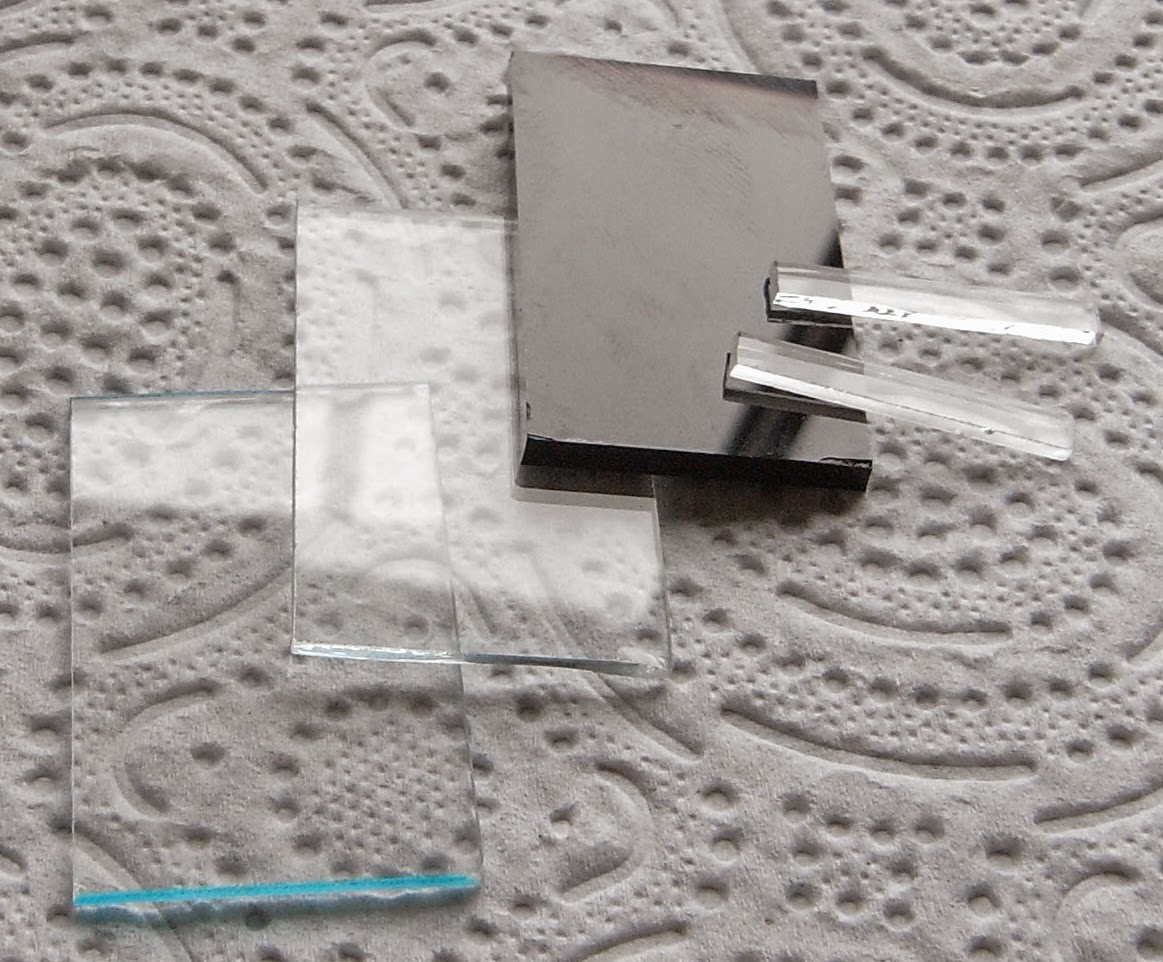Everyone knows about Sven Yrvind, the brilliant, crazy Swede who wants to be the first to sail around the world in a 10 foot (3 metre) boat of his own design and construction.
Fewer people know that he designed a small instrument for measuring the time at which the sun reached a pre-calibrated altitude. This is useful for plotting a position, with an accuracy of a few miles, at sea. He called this instrument a 'Bris Sextant'.
 |
| Sven Yrvind with his Bris sextant |
It's not a sextant, strictly speaking (possibly a fixed solar goniograph), although it does a similar job.
'Bris' is the Swedish word for 'breeze': at least one of Sven's boats was called Breeze.
Almost no-one, it seems, has built or used a Bris Sextant (or, if they have, they haven't written about it), although there are some very learned discussions of its reflections and angles on the internet.
So here goes . . .
The microscope slides were easy: they've always lived in a plastic box on a bookshelf.
 |
| Components cut to size |
A first experiment, with whole slides and cyanoacrylate glue (Superglue) worked well.
Cutting them to size was not easy. The standard glass-cutter, with hardened wheel, scratched a line but the slides broke anywhere except along the line.
Sean, of ClearGlass in Cambridge, did a much better job: he cut the slides in half and then cut 5mm strips from one slide.
The shaded glass was not easy: optical filters are expensive, and the final device threatened to cost as much as a cheap sextant. Sven gave few details except, in one diagram, to describe them as "Tonio 12". It was StJohn who realised that this referred to the filters in welders' goggles or helmets.
 |
| Assembled goniograph |


No comments:
Post a Comment